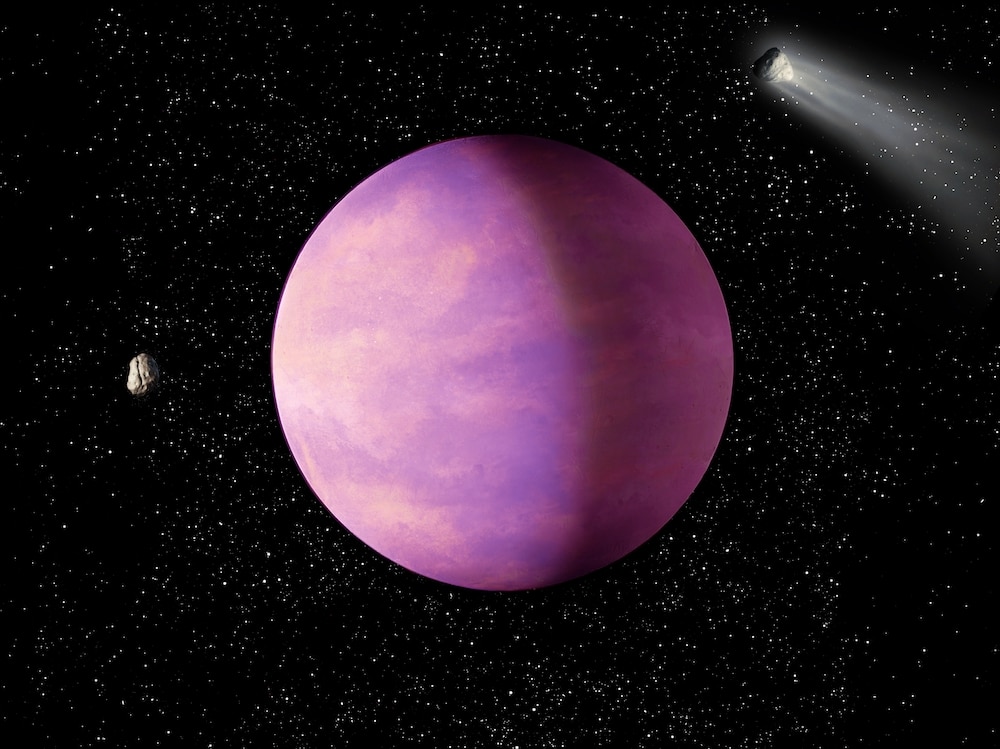Create a free profile to get unlimited access to exclusive videos, sweepstakes, and more!
Some planets want to be giants when they grow up (and they grow faster than we thought)
Planets can grow into monsters in much less time than something that huge was thought to reach "adulthood."

When you were a kid, did you ever wish you could magically grow up? Maybe you would have gotten your wish if you were a planet.
The V1298 Tau system is just 20 million years old (nothing in cosmic terms). However, a team of scientists who observed it were able to find out the masses of two humongous planets that were younger than any other known beasts like that. Previously, these types of planets were thought to grow much more slowly to reach that size. This has now become the first time anyone found evidence that giants comparable to Jupiter and Saturn can evolve so fast.
So how can they even get so huge? They are thought to start off abnormally large, and can reach the size of planets in our solar system in virtually no time — again, at least in cosmic terms — and grow beyond that. Initially discovered by NASA’s Kepler telescope (RIP) and then seen through HARPS-N spectrographs, at the Telescopio Nazionale Galileo, Roque de los Muchachos Observatory (ORM), and CARMENES, at the Calar Alto Observatory, their masses were unknown until now. These behemoths could turn around what we think we know about outsize planets.
“We [found] that the two outermost giant planets, V1298 Tau b and c [larger than Jupiter] seem to contradict our knowledge of early-stages planetary evolution,” the researchers said in a study recently published in Nature.
Despite their size, space Godzillas like this are not always the easiest objects to detect. Because they are still floating around in young star systems, their stars tend to be highly active, making them superbright. So much light can drown out signals from even a planet of enormous size. To actually isolate the signals from V1298 Tau b and c, the researchers needed to painstakingly separate all the star signals that were getting in the way. Planets do transit, or pass in front of, their stars as they orbit, but enough luminosity can make them almost invisible to observers.
After the starlight was cleared up and the planets could be examined more closely, the scientists were able to get the mass and radius for each one. Planets b and c both turned out to be slightly larger than Jupiter. Not only are they about as huge as planets near us, but also many exoplanets in other star systems, which means they had to be created under similar conditions. Not all the processes that form planets like this are known, but further observations can help us rewind time for an idea of what happened to form gas giants in the early solar system.
Whether what happened in V1298 Tau is the usual thing for young star systems, or if it is a really alien exception, is still unknown. Fast evolution followed by contraction over millions to billions of years may just be the way gargantuan orbs come into being. If it is normal, it may change the way we think planets like Jupiter and Saturn and Neptune were born. Jupiter is thought to have formed when gas and dust swirling around in the protoplanetary disc, including leftovers from the Sun's formation, were pulled in by gravity. That was about 4 billion years ago.
Because it seized the opportunity to take in whatever material the Sun didn't need, Jupiter ended up twice as massive as the rest of the planets in the solar system combined. What is even more impressive about it is that it is made of the same stuff as a star but couldn’t quite reach the mass that was necessary for it to catch fire. Saturn formed similarly and is also made of the same hydrogen and helium you’d find in a star. The question that needs to be answered now is whether the planets in V1298 Tau blew up he same way, but faster — or not.
“They should reach their mass–radius combination only hundreds of millions of years after formation,” the researchers said. "This result suggests that giant planets can contract much more quickly than usually assumed.”


























